Types of Blade Grinds
When buying a knife, various parameters are often considered, such as the steel material, blade length, and sheath, among others. However, a crucial factor that is often overlooked is the grind. Some people don't even think about it, while others can't decide whether a flat, hollow, or Scandi grind is better... As with everything, each type of grind has its strengths and weaknesses. In this article, we will try to summarize them as simply as possible for you.

Flat Grind
The grind tapers evenly from the spine of the blade toward the edge and ends with a bevel. This is the simplest and currently the most common type of grind. It's a golden middle ground between durability and cutting ability. It's no coincidence that almost all kitchen knives in the world have a flat grind. But don’t think that this type is only suitable for slicing and cutting; it can handle much more. However, for the toughest tasks, other types of grinds are more suitable. Flat grinds are popular, especially with companies like Spyderco (pictured: Endura 4), and Böker Plus Rold is a great example that flat grinds aren't out of place on larger outdoor knives either.
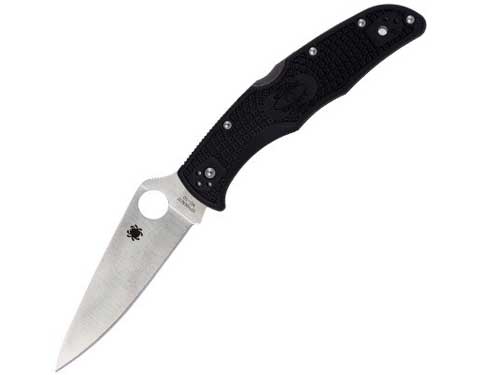 | 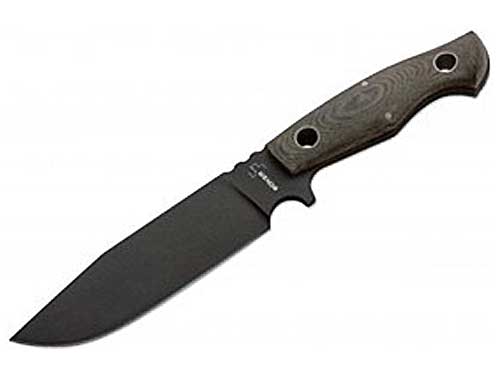 |
| Spyderco Endura 4 | Böker Plus Rold |
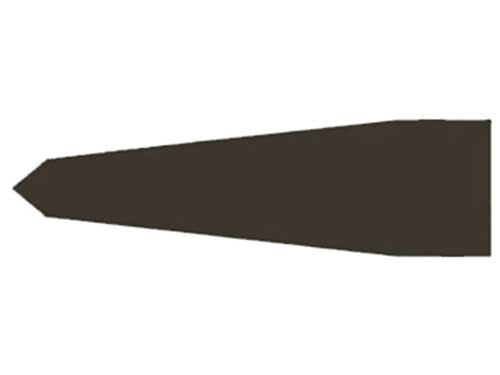
Partial Flat Grind
This is essentially the same grind as a flat grind, except that the taper doesn't start from the spine of the blade but a bit lower down. This results in a slightly larger angle of grind, and thus higher durability. In practice, however, this difference is negligible, and it is more of a design feature. It can be considered a middle ground between flat and saber grinds. A good example of this type of knife is the popular Benchmade Bugout or the Muela Rhino.
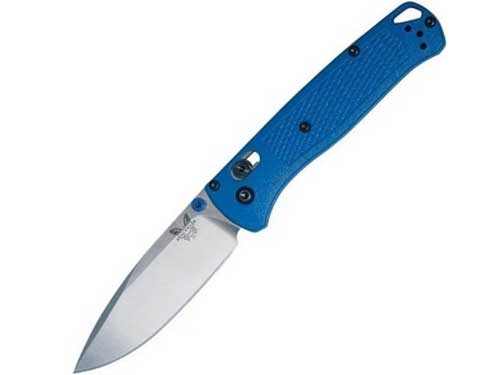 | 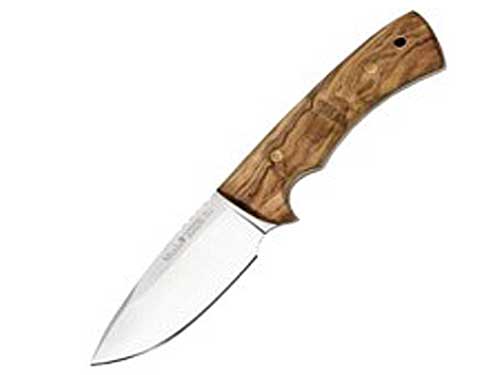 |
| Benchmade Bugout | Muela Rhino |
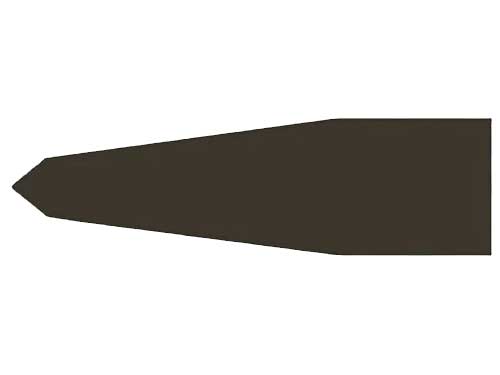
Saber Grind
As mentioned above, the saber grind is very similar to the partial flat grind, except that the taper begins even lower. This makes the blade a bit thicker and more durable, but also less sharp. Therefore, this grind is popular mainly with military/tactical knives. The difference between saber and partial flat grinds is minimal, and it's hard to tell which is which, as each manufacturer uses different labels. The main idea is that the lower the taper starts, the stronger and less sharp the blade will be. Of course, you also need to consider the overall width and material of the blade. Good examples include the Mikov Uton and Böker Plus Strike.
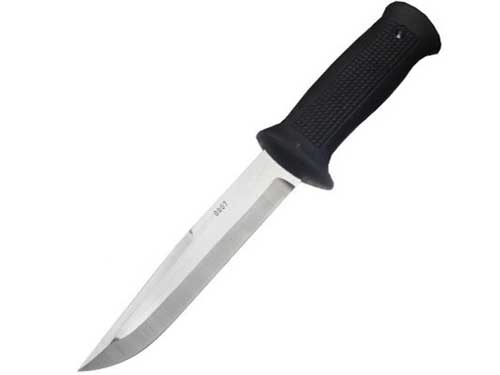 | 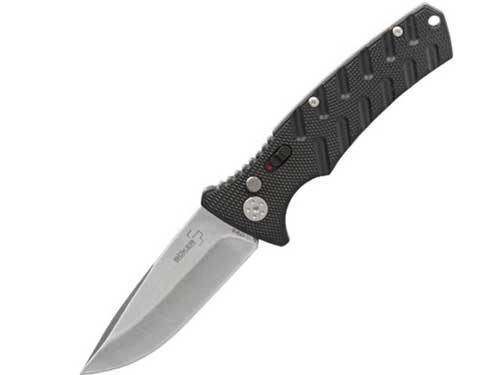 |
| Mikov Uton | Böker Plus Strike |
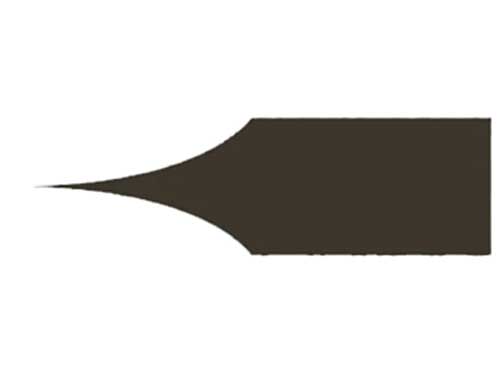
Hollow Grind
The hollow grind features a concave curve from where the grind starts down to the edge, ending with a bevel. Sometimes, it's hard to tell with the naked eye if it's a hollow grind. A trick to help you identify it is to look at the light reflection. If the light bends as you move the blade, it's a hollow grind. The advantages and purpose of this grind are clear – slicing and cutting. This is exactly where this grind excels and is unbeatable. It's no surprise that all shaving razors have this shape. It’s also popular with hunting knives for skinning and working with meat. Because the blade is significantly thinner, it's also weaker, so it's not suitable for demanding tasks as it can get damaged more easily. Pictured are the Kizlyar Supreme Colada and the razor Böker Manufaktur Solingen King Cutter.
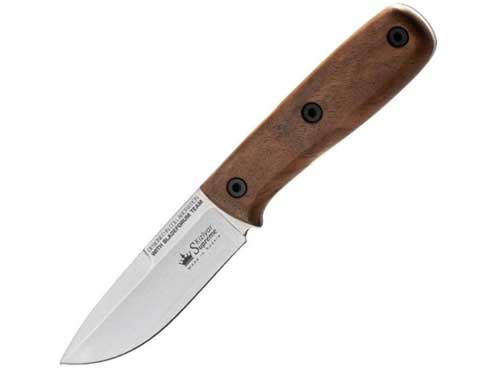 | 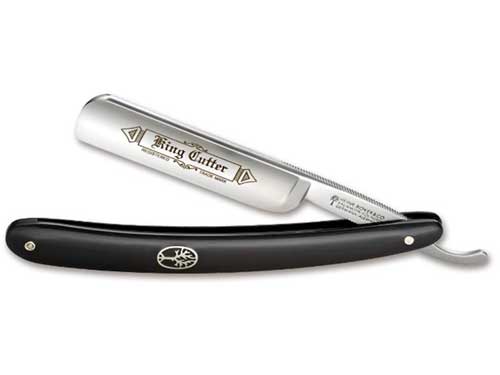 |
| Kizlyar Supreme Colada | Böker Manufaktur Solingen King Cutter |
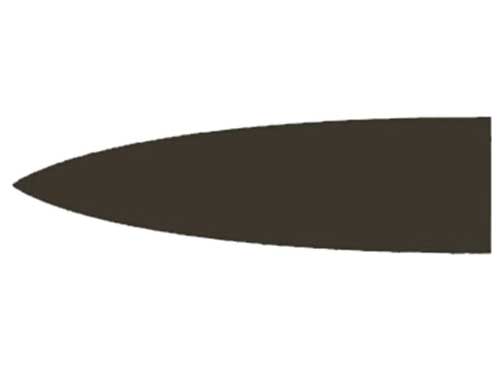
Convex Grind
A convex grind has a convex curve from the spine of the blade all the way down to the edge. This grind doesn't have a separate bevel, as the grind itself transitions smoothly into the edge. The advantage of this grind is its immense durability since the entire blade is more robust due to its convex shape. Knives with this grind are most popular for bushcraft. The downside of this grind is its cutting ability. People often worry about sharpening a convex grind, but if you know how to do it, there's no need to fear – but we will explain that in another article. Perhaps the most famous knife with a convex grind is the Fallkniven F1. On the second picture is the Real Steel Bushcraft Plus Scandi.
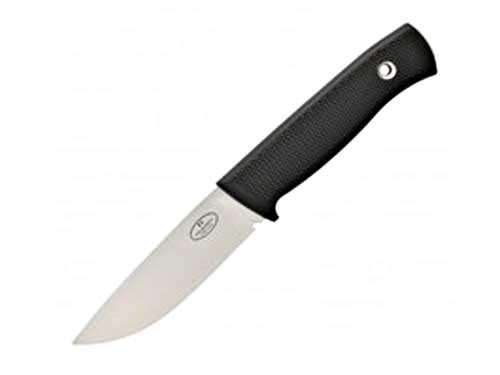 |  |
| Fallkniven F1 | Real Steel Bushcraft Plus |
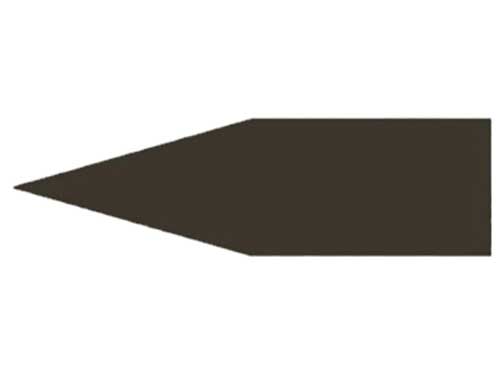
Scandinavian Grind (Scandi)
The Scandi grind looks similar to the saber grind, except that it doesn't have a bevel. In this case, you could say that the Scandi grind is one big bevel. Like the convex grind, it is very durable and also great for woodworking. Another big advantage is that it can be easily sharpened on a stone without requiring much skill. However, if the edge gets chipped and you want to maintain the grind, you'll need to remove quite a bit of material from the blade to repair it. The Scandi grind is most commonly used on work and outdoor knives. The most famous knives with this grind are undoubtedly Morakniv. Pictured are the well-known Morakniv Companion and the robust Morakniv Garberg.
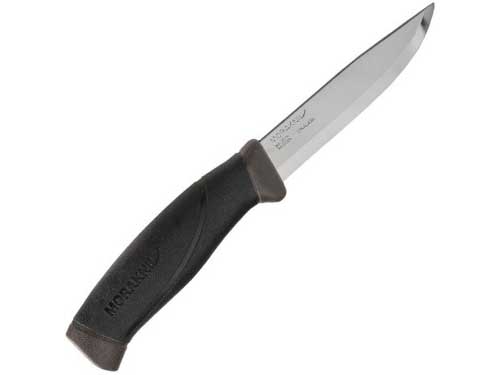 |  |
| Morakniv Companion | Morakniv Garberg |
Summary and Conclusion
It's hard to say that one type of grind is better than another in every way. Each excels at different things. So, figure out what tasks the knife will primarily be used for, and choose accordingly. If you also carefully consider the blade thickness and material, I believe you'll be able to choose the ideal knife. We hope this article helps you in selecting your next knife, but if you're still unsure, feel free to reach out to us, and we will gladly help you with any advice.


























































































































































 Slovakia
Slovakia  Czech Republic
Czech Republic  Austria
Austria  Germany
Germany  Hungary
Hungary  Romania
Romania  Poland
Poland